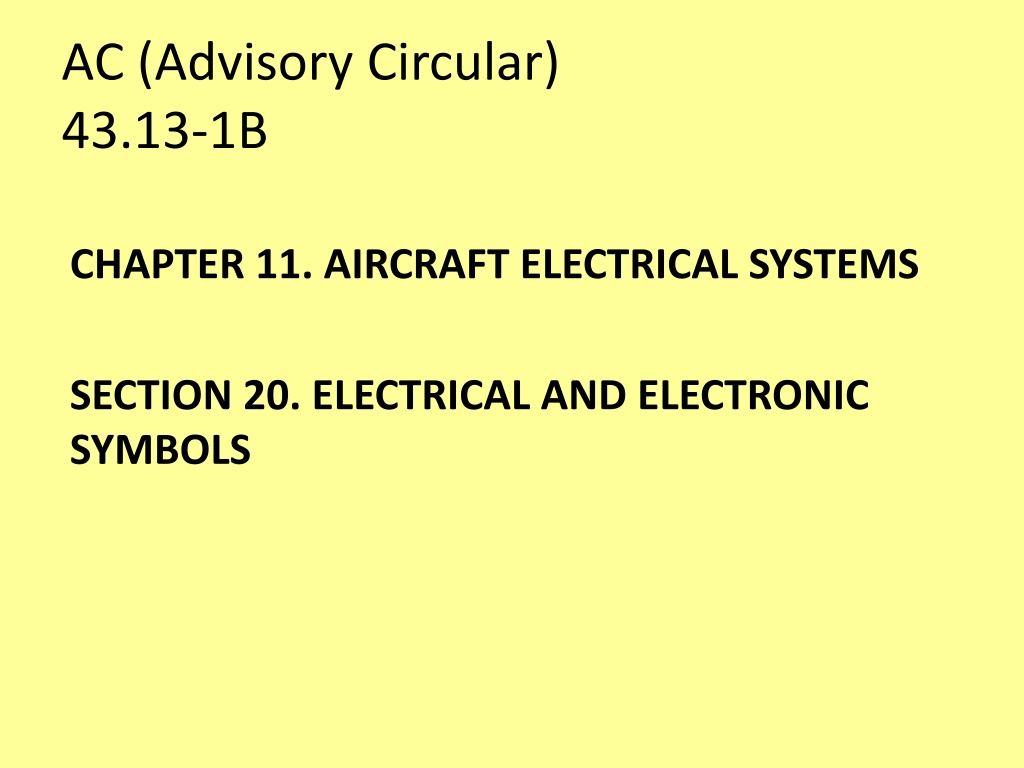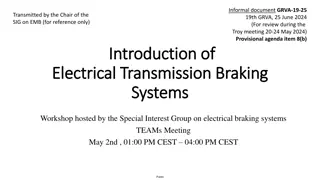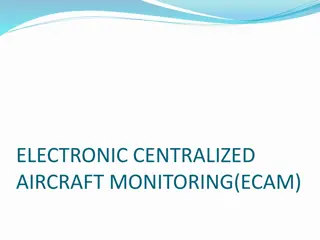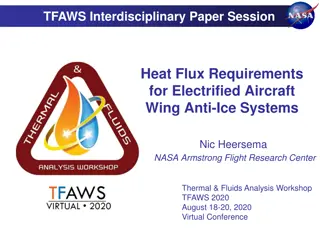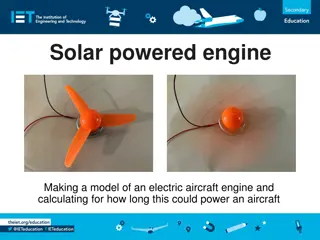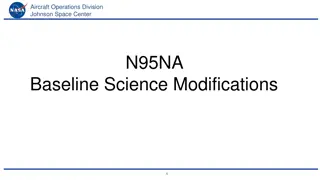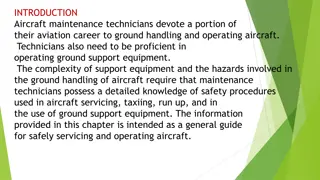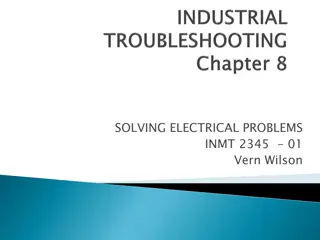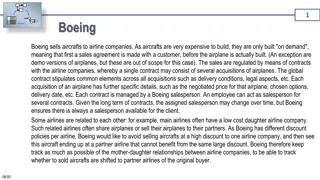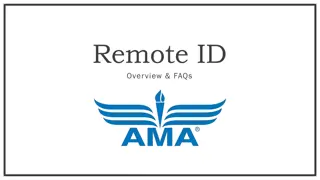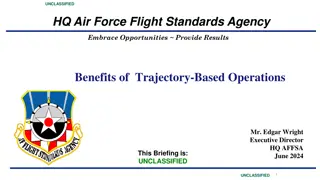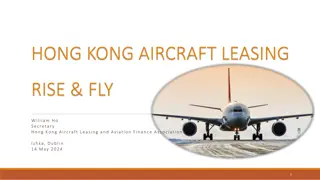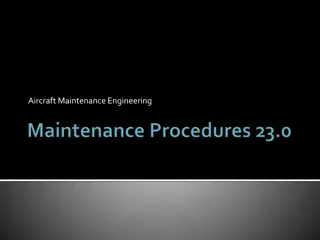Understanding Aircraft Electrical Systems and Components
Aircraft electrical systems play a crucial role in generating, regulating, and distributing electrical power throughout an aircraft. This includes components operating on different voltages like AC and DC, with standard units of measure for voltage, current, resistance, and power. The choice of materials in cables affects their electrical properties, and proper handling practices are essential to prevent damage. Circuit control and protection devices such as circuit breakers and fuses are key for safety compliance with regulations like Federal Aviation Regulation 23.1365.
Download Presentation

Please find below an Image/Link to download the presentation.
The content on the website is provided AS IS for your information and personal use only. It may not be sold, licensed, or shared on other websites without obtaining consent from the author. Download presentation by click this link. If you encounter any issues during the download, it is possible that the publisher has removed the file from their server.
E N D
Presentation Transcript
AC (Advisory Circular) 43.13-1B CHAPTER 11. AIRCRAFT ELECTRICAL SYSTEMS SECTION 20. ELECTRICAL AND ELECTRONIC SYMBOLS
The function of the aircraft electrical system is to generate, regulate and distribute electrical power throughout the aircraft.
Aircraft electrical components operate on different voltages both AC and DC. Most aircraft systems use 115 volts AC at 400 hertz (Hz) or 12-28 volts DC. Textbook page 168
Electrical Units of Measure Voltage (pressure) unit of measure is the Volt Current (flow) unit of measure is the Ampere (amp) Resistance (friction) unit of measure is the Ohm Power (force) unit of measure is the Watt
Coaxial or Coax Cable Choice of materials and dimensions determines the cable's electrical properties, including attenuation at various frequencies.
Never kink coaxial cable. Never drop anything on coaxial cable. Never step on coaxial cable. Never bend coaxial cable sharply. Never loop coaxial cable tighter than the allowable bend radius. Never pull on coaxial cable except in a straight line.
Circuit Control and Protection Switch Circuit Breaker Fuse
Federal Aviation Regulation: 23.1365 Electric cables and equipment. (a) Each electric connecting cable must be of adequate capacity. (b) Any equipment that is associated with any electrical cable installation and that would overheat in the event of circuit overload or fault must be flame resistant. That equipment and the electrical cables must not emit dangerous quantities of toxic fumes. Cable must be separated from flammable fluid lines;
Federal Aviation Regulation 23.1367 Switches Each switch must be (a) Able to carry its rated current; (b) Constructed with enough distance or insulating material between current carrying parts and the housing so that vibration in flight will not cause shorting; (c) Accessible to appropriate flight crewmembers; and (d) Labeled as to operation and the circuit controlled. Textbook page 255-260
American Wire Gauge (AWG) Is a system used predominantly in the United States and Canada for the diameters of round, solid, nonferrous, electrically conducting wire. The cross-sectional area of each gauge is an important factor for determining its current carrying capacity. Increasing gauge numbers give decreasing wire diameters.
http://de.academic.ru/pictures/dewiki/50/220px-Wire_gauge_%28PSF%29.pnghttp://de.academic.ru/pictures/dewiki/50/220px-Wire_gauge_%28PSF%29.png
The Federal Communications Commission regulates interstate and international communications by radio, television, wire, satellite and cable in all 50 states. It was established by the Communications Act of 1934 and operates as an independent U.S. government agency overseen by Congress.
General Radiotelephone Operator License Is required to adjust, maintain, or internally repair FCC licensed radiotelephone transmitters in the aviation, maritime, and international fixed public radio services.
Fly By Wire http://www.youtube.com/watch?v=mhKTBJzl-Qk
